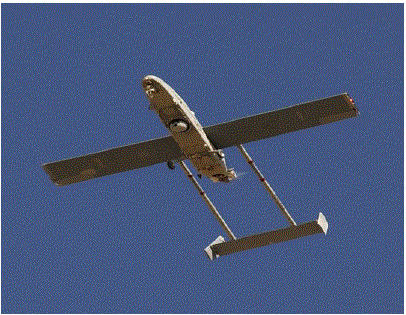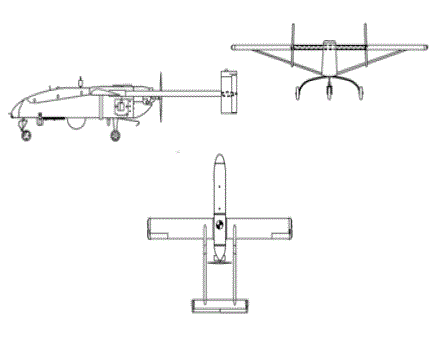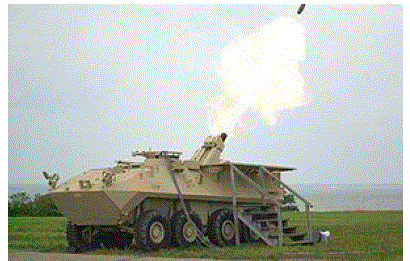HISTORY OF MILITARY ROBOTS
|
| The history of military robots can be traced back to the times of World War II. During the time of World War II and the Cold War, these robots were in the form of German Goliath tracked and Soviet teletanks. It is also believed that military robots history can be dated back to the 19th century, precisely in 1898. The history begins with the invention of radio controlled boat intended for military use by Nicola Tesla. He offered his invention to US navy in order to produce radio controlled torpedoes but the navy refused his offer. Later, he offered his invention to the United Kingdom. |
| The next important step that gives a turning point in the history of military robots was in 1930-ties in the Soviet Union. Soviet Union made a remote controlled tank called as ‘teletank’. Later on the tank’s control system was modified and to control the tank electric relays and radio signals were used. Depending on weather and other conditions teletank could be controlled from 500-1500m away. The teletanks were equipped with DT machine guns, flamethrowers and smoke container to provide a smokescreen. The use of Goliath which is a mobile landmine in World War II by the Third Reich's forces also marked a turning point in the history of military robots. Goliath was roughly 1, 50 m long, 0,85m wide and 0,6 m high. The first version of Goliath was Sd.Kfz. 302 (Goliath E). This goliath version have two battery driven 2,5 KW electro motors. However, the second version of goliath i.e. Sd.Kfz.303 or "Goliath V" was equipped with a gasoline engine since it could provide greater range and was cheaper. This is the history behind military robots. |
CURRENT USE OF MILITARY ROBOTS
|
| At present the most commonly used military robot is the unmanned aerial vehicle IAI Pioneer and RQ-1 Predator. These robots can be armed with Air-to-ground missiles. We have also seen some propitious research in the field of artillery with an experimental weapons system named ‘Dragon Fire II’. This weapon automates the loading and ballistics calculations required for accurate predicted fire, providing a 12 second response time to artillery support requests. There have been some developments towards developing autonomous fighter jets and bombers. |
RQ-2 Pioneer
|
| The RQ-2 Pioneer is an unmanned aerial vehicle (UAV) that had been utilized by the United States Navy, Marine Corps, and Army, deployed at sea and on land from 1986 until 2007. Initially tested aboard USS Iowa (BB-61), the RQ-2 Pioneer was placed aboard Iowa-class battleships to provide gunnery spotting, its mission evolved into reconnaissance and surveillance, primarily for amphibious forces.It was developed jointly by AAI Corporation and Israel Aircraft Industries. The program grew out of successful testing and field operation of the Tadiran Mastiff UAV by the American and Israeli militaries.Essentially, the Pioneer is an upgraded Tadiran Mastiff which was re-engined to accommodate a greater payload by request of the US Navy. To accomplish this, the original "Limbach" two-cylinder two-stroke engine was replaced with a Fichtel & Sachs two-cylinder twostroke. The Limbach motor utilized a 28 inch propeller from Propeller Engineering and Duplicating, Inc. of San Clemente, California. The newer, more powerful Fichtel & Sachs motor was outfitted with a 29 inch propeller (which spins in the opposite direction) from the Sensenich Propeller Manufacturing Company of Lancaster, Pennsylvania. |
OPERATION
|
| Launched by rocket assist (shipboard), by catapult, or from a runway, the Pioneer recovers into a net (shipboard) or with arresting gear after flying up to 5 hours with a 75- pound (34 kg) payload. It flies day or night missions with a gimbaled EO/IR sensor, relaying analog video in real time via a C-band line-of-sight (LOS) data link. Since 1991, Pioneer has flown reconnaissance missions during the Persian Gulf, Somalia (UNOSOM II), Bosnia, Kosovo and Iraq conflicts. In 2005, the Navy operated two Pioneer systems (one for training) and the Marines operated two, each with five or more aircraft. It is also operated by Israel and the Republic of Singapore Air Force. In 2007 Pioneer was retired by the US Navy and was replaced by the Shadow UAV. |
| Internationally, Pioneer drones are perhaps most remembered for their role in the 1991 Gulf War, when a Pioneer launched by the Iowa-class battleship USS Wisconsin (BB-64) observed Iraqi troops on Failaka Island surrendering shortly after USS Missouri's attack on their trenchlines. When navy officials offered to transfer a Pioneer to the Smithsonian Institution, curators at the National Air and Space Museum specifically asked for the UAV that Iraqi troops surrendered to during the Gulf War.[2] |
| The "R" is the Department of Defense designation for reconnaissance; "Q" means unmanned aircraft system. The "2" refers to its being the second of a series of purposebuilt unmanned reconnaissance aircraft systems. |
Specifications
|
| ïÃâ÷ Primary Function: Artillery Targeting and Acquisition, Control of Close Air Support, Reconnaissance and Surveillance, Battle Damage Assessment, Search and Rescue, Psychological Operations |
| ïÃâ÷ Contractor: Pioneer UAVs, Incorporated; Israel Aerospace Industries Ltd. |
| ïÃâ÷ Power Plant: Sachs 2-stroke 2-cylinder horizontally-opposed piston engine rated at 26 hp (19 kW) or alternative RQ-2C: UEL AR-741 rotary engine; 28.3 kW (38 hp) |
| ïÃâ÷ Length: 14 feet (4 m) |
| ïÃâ÷ Height: 3.3 feet (1.0 m) |
| ïÃâ÷ Weight: 205 kilograms (452 pounds) |
| ïÃâ÷ Wingspan: 16.9 feet (5.2 m) |
| ïÃâ÷ Speed: 110 knots (200 km/h) |
| ïÃâ÷ Range: five hours at 185 kilometers (100 nautical miles) |
| ïÃâ÷ Ceiling: 4600 meters (15,000 ft) |
| ïÃâ÷ Fuel Capacity: 44-47 liters |
| ïÃâ÷ Payload: Dual Sensor (12DS/POP-200/POP-300) |
| ïÃâ÷ System Cost: |
| ïÃâ÷ Inventory: 175 Delivered/35 In-Service |
DRAGON FIRE
|
| The Dragon Fire 120 mm heavy mortar was a private venture by TDA Armaments that was picked up by the US Marine Corps for its EFSS (Expeditionary Fire Support System) requirement. It is a fully automated mortar capable of using rifled or smoothbore 120 mm ammunition. Like all mortars, it is a high-angle-of-fire weapon used for indirect fire support. Dragon Fire is also expected to be effective in a counter-battery role. |
Operation
|
| The Dragon Fire mortar system can be deployed mounted in an LAV, towed by a HMMWV, or air deployed by CH- 53 Sea Stallion helicopter or V-22 Osprey. Fixing the weapon in an LAV does not require a separate mount; its towing carriage can be converted to an LAV mount in five minutes. After deployment, the crew can control the weapon system from a remote station. In operation, it is designed to be fully automatic: loading, computing firing solutions, aiming and firing automatically. From an unloaded condition, the weapon is capable of loading, completing a firing solution, aiming, and firing the first round within 14 seconds of receiving an order. The weapon is also capable of being operated manually in the event of failure of an automatic system.The advanced fire control system is fully compatible with the US Army system, to reduce the risk of friendly fire (fratricide) incidents. |
Specifications
|
| Shell ? |
| Caliber 120 mm |
| Rate of fire 10 rounds per minute (maximum) |
| 4 rounds per minute (sustained) |
| 8,200 m |
| Effective firing range (13,000 m with rocket assisted projectile) |
OTHER MILITARY ROBOTS
|
| Today, almost all the military organizations take the help of military robots to carry out many risky jobs that cannot be handled manually by soldier. We have also seen a great development in military robots when compare to military robots in earlier time. At present, different military robots are utilized by many military organizations. Here, in this article we will discuss about the current use of military robots and its different kinds. |
| Given here is a brief description on the present use of military robots: |
| Daksh – Daksh is one of the most current military robots. It is an electrically powered and remote controlled robot which is used to locate, handle and destroying risky objects safely. The man role of this military robot is to recover improvised explosive devices. In short it is a vehicle for defusing bombs. The current use of military robots like Daksh has helped military organization in many ways. This robot can even climb stairs to reach risky materials. Moreover, it can also scan objects using its portable X-ray device. |
| Goalkeeper – As far as the current use of robots in military is concerned, we cannot leave behind Goalkeeper. This military robot is a Dutch close-in weapon system that helps to defends ships from incoming missiles as well as ballistic shells. This system generally comprises of autocannon and advanced radar that tracks incoming fires. It is an automatic system that can be also be deployed to protect airfields. |
| PackBot – PackBot is basically a series of military robots. The most recent base model of this robot is PackBot 510. This model utilizes a videogame-style hand controller make handier to young women and man. Configurations in this recent model include PackBot 510 with EOD bomb disposal, PackBot 510 with fast Tactical Maneuvering Kit; PackBot 510 with first responder kit, PackBot 510 with HazMat Detection Kit, PackBot 510 with Fido and PackBot 510 with REDOWL Sniper Detection Kit. |
| MARCbot - This is also one type of military robots that has been used to inspect suspicious objects. It is a low cost robotic platform, and it has been used in Iraq for the inspection of suspicious objects. This robot is one amongst the smallest and the most commonly used military robots. It looks like a small toy truck with an elevated mast on which a camera is mounted. The camera is utilized for looking behind the doors. It has the capacity to run 6 hours on a set of fully charged batteries and was developed with the input of soldiers in Iraq to meet their needs. However, the use of military robots today has helped the soldier to detect hazardous materials and objects. |
| Besides above mentioned military robots, there are also other kinds of military robots often used by the military organizations. These robots include Guargium, RQ-9 Predator B, RQ-1 Predator, TALON, Samsung SGR-A1 and Gladiator Tactical Unmanned Ground Vehicle. The above information on the current use of military robots will let you know the kinds of military robots used in recent era. |
| |
Figures at a glance
|
 |
 |
 |
| Figure 1 |
Figure 2 |
Figure 3 |
|
| |
References
|
- ANGELO,J. A. (2007):Robotics: a reference guide to the newtechnology.Libraries Unlimited. Santa Barbara, United States. ISBN:1573563374
- SICILIANO,B. & K HATIB,O. (Eds) (2008): Handbook of Robotics.Springer-Verlag. Berlin, Germany. ISBN 978-3-540-29838-0
- SINGER,P. W. (2009): Wired for War. The Penguin Press. New York,United States. ISBN 978-1-5942-0198-1.
- WILLIAMSON,M. (2006): Spacecraft technology: the early years,IET.Herts, United Kingdom.
|